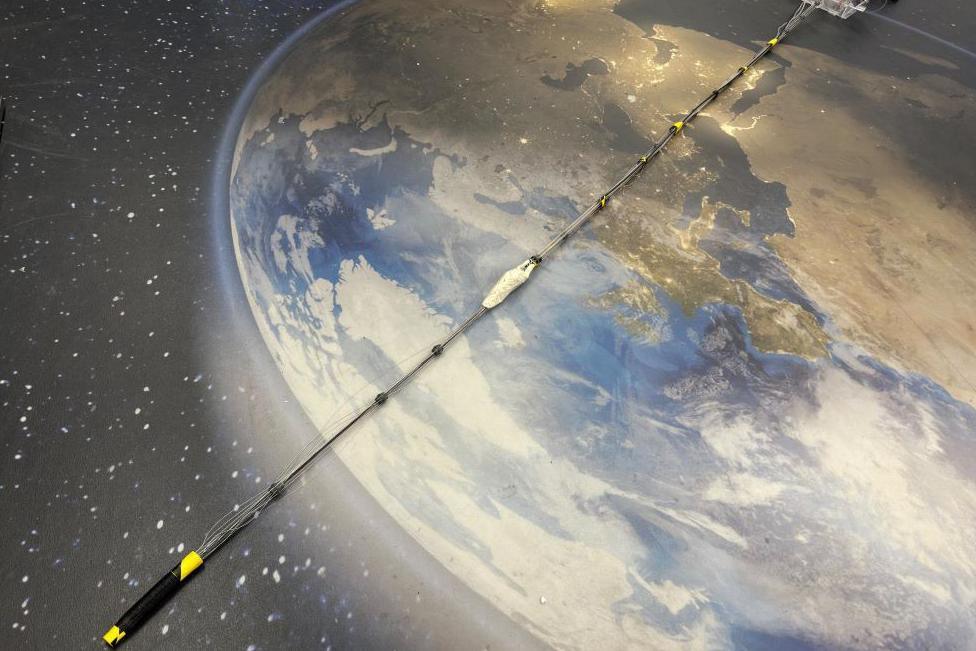Snake robot sent to part of Dounreay not seen in years

A close up image of a snake robot developed at the University of Nottingham
- Published
A snake-like robot has been used to inspect a potentially hazardous area at the site of Scotland's largest nuclear clean-up and demolition project.
Dounreay on the north Caithness coast opened almost 70 years ago as the UK's centre of fast reactor research and development.
It is now being decommissioned and demolished.
The robot developed by a University of Nottingham team was equipped with a camera, lights and radiation detector for its investigation of a part of redundant laboratory that had not been seen for more than 40 years.
Nottingham's snake robots can measure from 4mm to 40mm in diameter and usually stretch from 3m to 7m in length.
One of their main uses has been for inspections and repair of aircraft engines.
The 7m-long robot made for Dounreay was able to fit through a 30mm gap to investigate a containment chamber called a shielded cell.

Dounreay was constructed as a centre for nuclear power research and development

The site near Thurso is now being decommissioned
Dr Xin Dong, an associate professor at the University of Nottingham, has been involved in the development of snake robots for 14 years.
He said the machines were controlled like a puppet on wires.
"Our puppet is a really long snake-like robot," said Dr Dong.
"You have a lot of joins, you have cables and you pull those cables to change the orientation.
"Instead of hands we can use motors and computers to control snake robots."

Snake robots have been used to inspect and repair aircraft engines

The controls for a snake robot
The project was initially funded by the Robotics and Artificial Intelligence in Nuclear hub.
Further support was secured from the Game Changers, external nuclear innovation programme.
Two companies, FIS360 and Ice9 Robotics, provided assistance to the university team.
It was the latest use of robots at Dounreay.
In a collaboration with the University of Manchester and Ice9, the site's operator used a robot called Lyra to survey a duct.
It has been suggested a pack of robotic "dogs" could help inspect potentially hazardous areas.
Dounreay has been working with Cumbria-headquartered Createc on trials of a robotic quadruped called Spot.

A snake robot stretched out on a floor